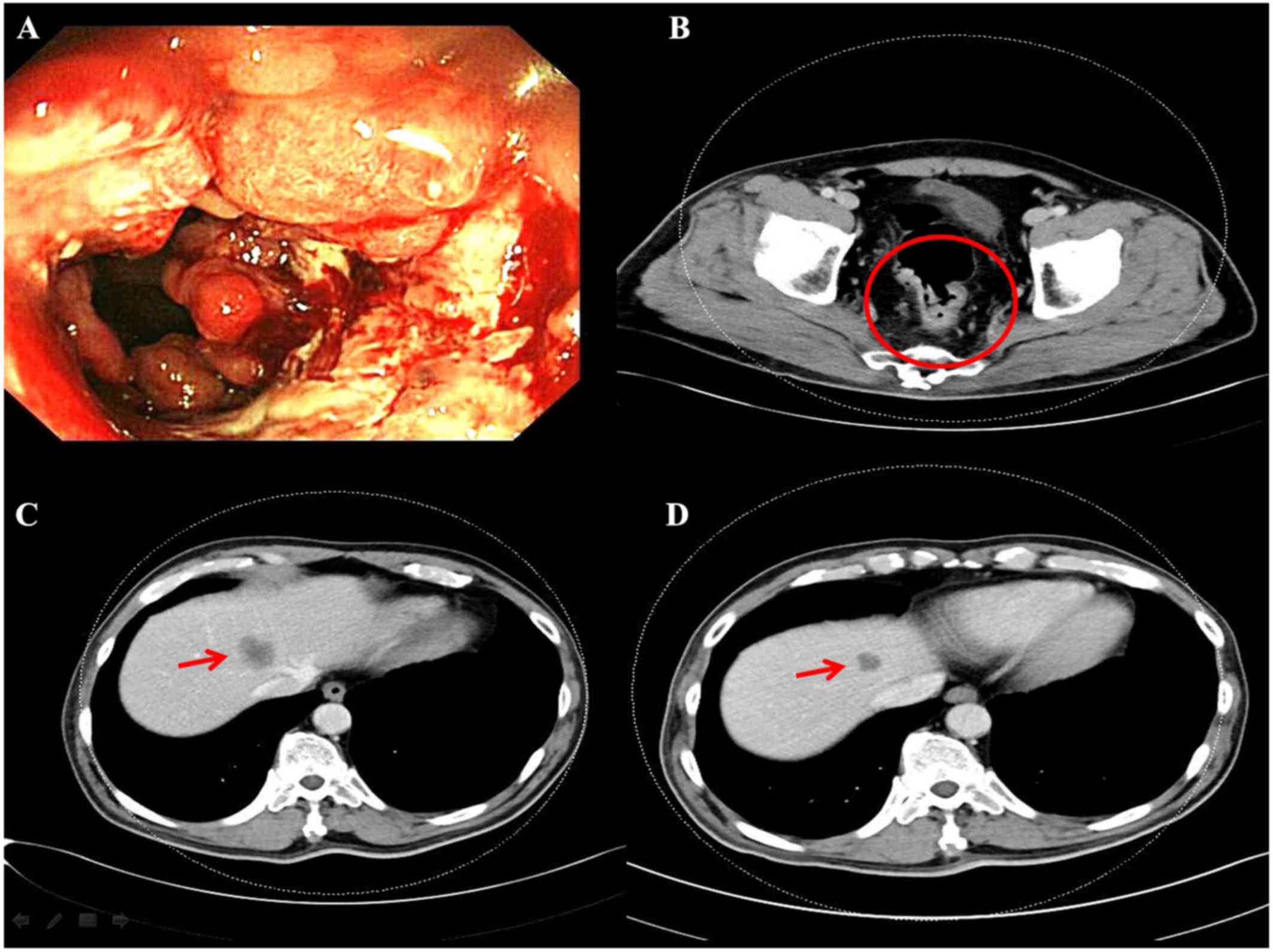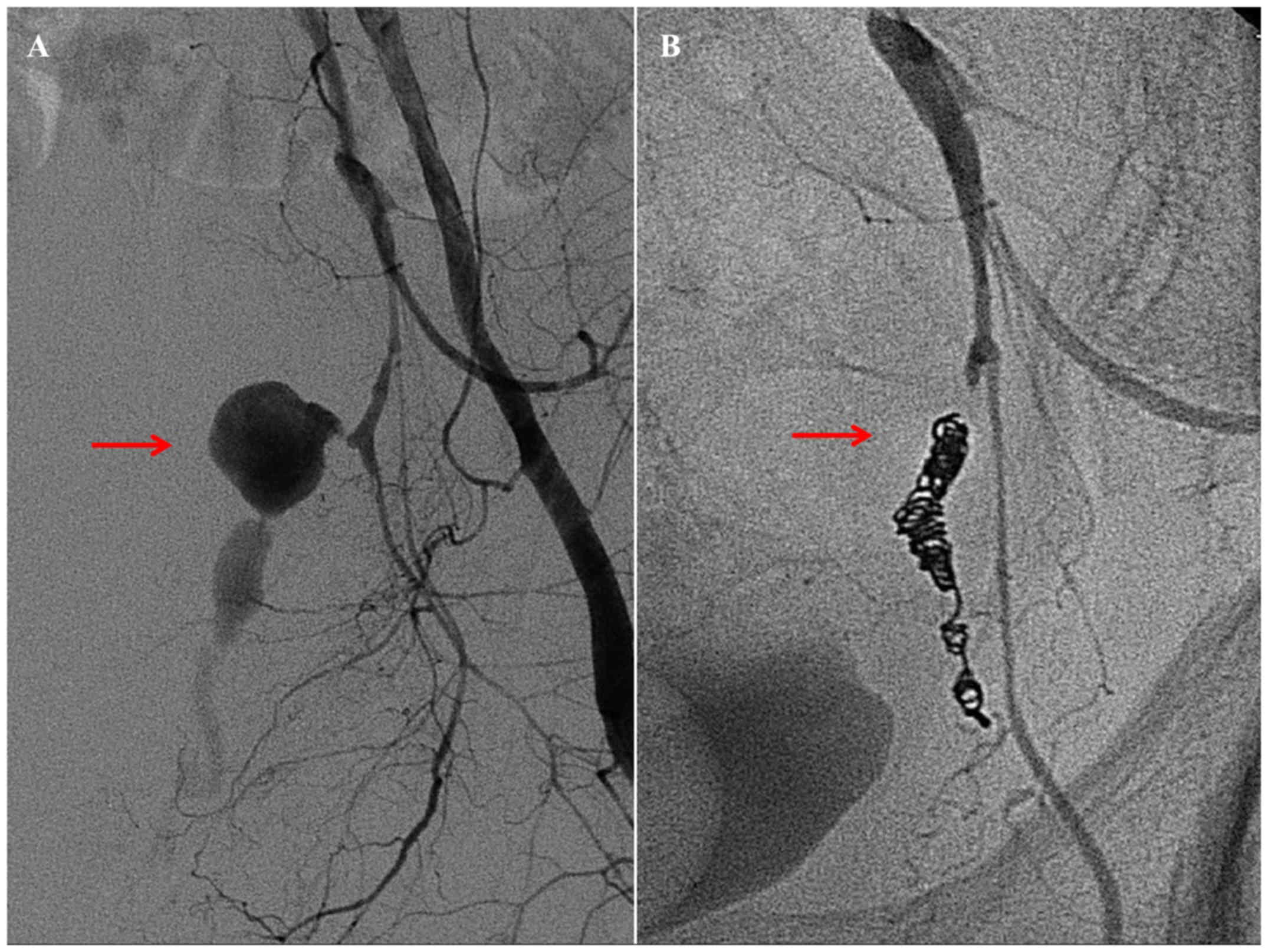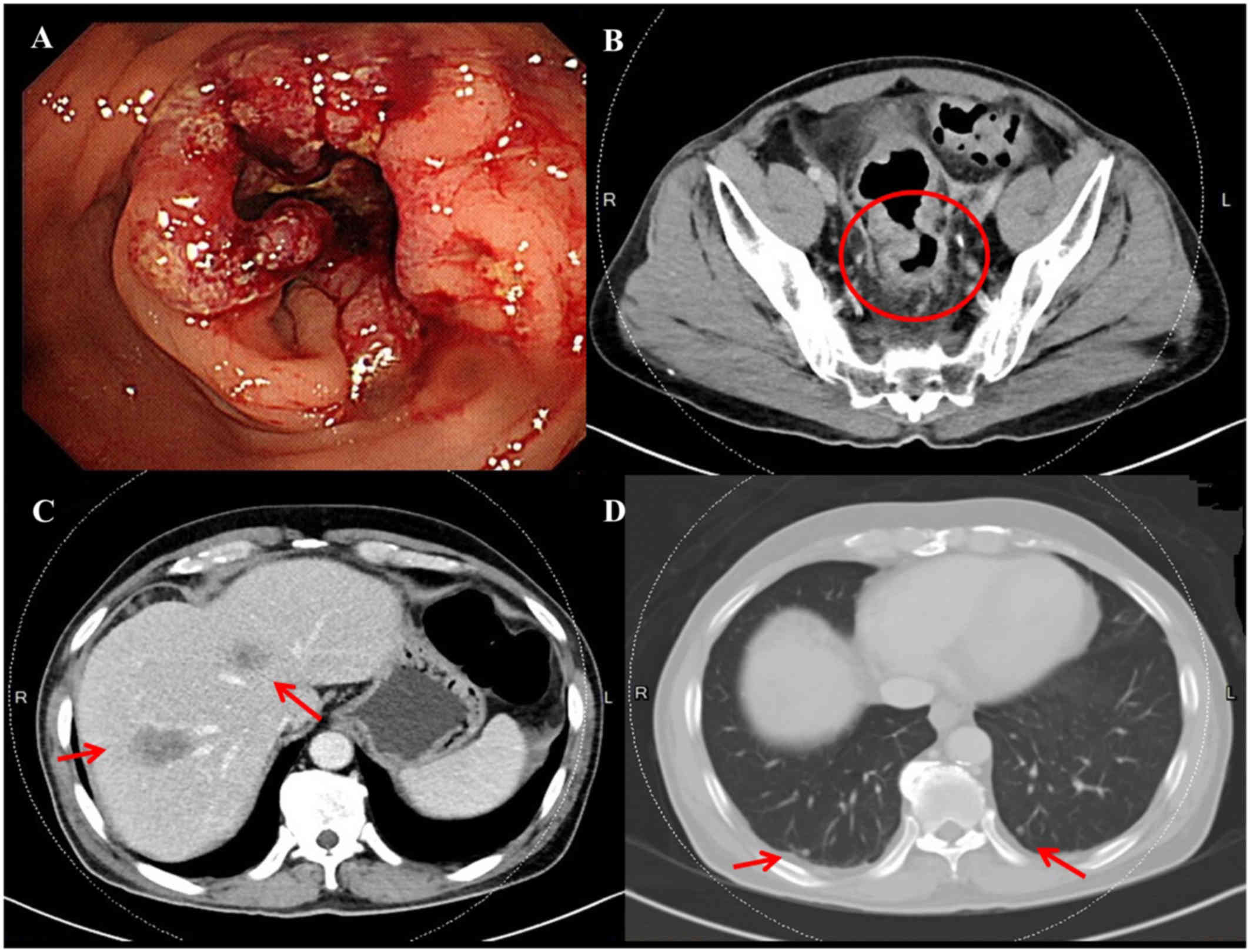Iatrogenic pseudoaneurysm after bevacizumab therapy in patients with metastatic colorectal cancer: Two case reports
- Authors:
- Published online on: September 6, 2018 https://doi.org/10.3892/mco.2018.1712
- Pages: 499-503
-
Copyright: © Li et al. This is an open access article distributed under the terms of Creative Commons Attribution License.
Metrics: Total
Views: 0 (Spandidos Publications: | PMC Statistics: )
Total PDF Downloads: 0 (Spandidos Publications: | PMC Statistics: )
Abstract
Pseudoaneurysms are extremely rare in patients with metastatic colorectal cancer (mCRC) treated with FOLFIRI and bevacizumab in the first‑line setting. We herein present two rare cases of iatrogenic pseudoaneurysm developing in patients with mCRC after administration of FOLFIRI and bevacizumab. The first patient was a 57‑year‑old man who was admitted to our institution with intermittent massive bloody discharge following treatment with the 9th cycle of FOLFIRI combined with bevacizumab. Colonoscopic examination revealed sizeable bloody clots in the rectum, but no active bleeder was identified; however, the patient's hemoglobin level was found to be persistently decreased, so an angiography was performed. The angiography revealed a pseudoaneurysm with contrast extravasation from a branch of the left internal iliac artery. Embolization of the bleeding vessel was performed, and the post‑embolization angiography revealed no active bleeding. The second patient was a 65‑year‑old man who observed blood in the stool following treatment with the 5th cycle of FOLFIRI combined with bevacizumab. The angiography revealed a pseudoaneurysm in the superior rectal artery, and intravascular embolization with coils was performed. The patient was discharged without any signs of recurrent bleeding. Following a review of the relevant English literature, to the best of our knowledge, this is the first report on the formation of a bevacizumab‑related pseudoaneurysms in mCRC patients. The aim of this study was to alert clinicians to the possibility of this rare complication.












